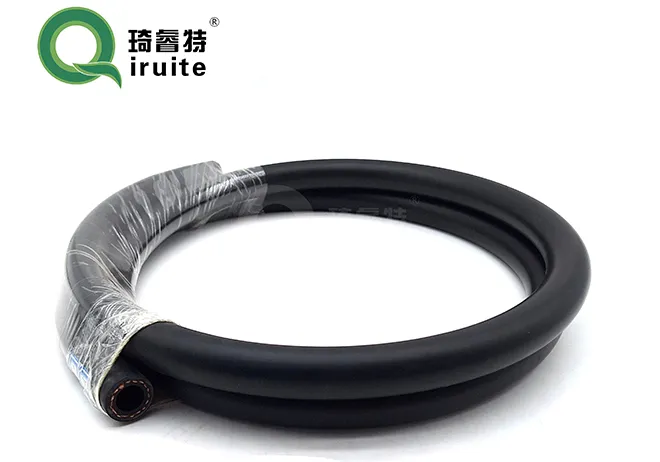Hydraulic Hose Connectors and Their Applications in Fluid Power Systems
Understanding Hydraulic Hose Fittings A Comprehensive Guide
Hydraulic hose fittings are essential components in hydraulic systems, playing a crucial role in ensuring efficient operation and safety. These fittings connect hoses to various equipment, allowing for the transfer of fluid under high pressure. With the growing use of hydraulic systems in industrial, agricultural, and automotive applications, understanding the types, functions, and maintenance of hydraulic hose fittings is vital for anyone working with these systems.
Types of Hydraulic Hose Fittings
Hydraulic hose fittings come in various types, each designed for specific applications and ease of installation. The most common types include
1. JIC (Joint Industrial Council) Fittings JIC fittings are popular in hydraulic applications due to their robust design and ability to withstand high pressure. They have a 37-degree flare designed to create a tight seal, reducing the risk of leaks.
2. SAE (Society of Automotive Engineers) Fittings These fittings are widely used in automotive applications. SAE fittings are characterized by their external threads and utilize an O-ring to ensure a leak-free connection.
3. NPT (National Pipe Tapered) Fittings NPT fittings have tapered threads that create a seal as the fittings are tightened. They are commonly used in plumbing as well as hydraulic applications.
4. BSP (British Standard Pipe) Fittings Used extensively in Europe and Asia, BSP fittings have a parallel thread design and are available in both tapered and parallel versions. They are known for their compatibility with various pipe sizes.
5. Quick Disconnect Fittings These fittings allow for the rapid connection and disconnection of hoses, providing convenience in applications where frequent changes are necessary. They consist of two parts—a male and female fitting—that lock together securely.
Functions of Hydraulic Hose Fittings
The primary function of hydraulic hose fittings is to create a secure connection between hoses and other hydraulic components, such as pumps, actuators, and reservoirs. This connection should be leak-proof to ensure the safe transfer of hydraulic fluid under pressure. A compromised fitting can lead to system failures, serious accidents, and environmental contamination.
In addition to sealing, hydraulic fittings must also accommodate the movement and vibration often present in hydraulic systems. Flexible hoses can expand and contract under pressure, and the fittings must be strong enough to endure these stresses without failure.
Choosing the Right Hydraulic Hose Fittings
hyd hose fittings

Selecting the appropriate hydraulic hose fittings is crucial for system efficiency and longevity. Consider the following factors
- Compatibility with Hose Material Ensure that the fitting material is compatible with the hydraulic hose you are using. Common materials include stainless steel, carbon steel, and brass.
- Pressure Rating Choose fittings that match or exceed the pressure rating of your hydraulic system. This helps prevent leaks and ruptures that could lead to system failures.
- Operating Environment Consider the environmental factors that may affect the performance of the fittings. For example, fittings exposed to corrosive substances may require specialized coatings or materials.
- Size and Configuration Ensure that the fittings are the right size and configuration for your application. Incorrect sizing can lead to improper connections and leaks.
Maintenance of Hydraulic Hose Fittings
Regular maintenance is vital for the longevity and reliability of hydraulic hose fittings. Here are some tips to keep in mind
- Inspect Regularly Regularly check fittings for signs of wear, corrosion, or damage. Look for leaks around connection points, as this is an early sign of potential failure.
- Tighten Connections Periodically ensure that all connections are secure. Vibrations and temperature fluctuations can cause fittings to loosen over time.
- Replace Damaged Parts If a fitting is damaged or shows signs of wear, it should be replaced immediately to avoid system disruption.
- Keep Clean Ensure that fittings are clean during installation to prevent debris from causing leaks. Any dirt or contamination can compromise the integrity of the seal.
Conclusion
Hydraulic hose fittings are integral to the functionality and efficiency of hydraulic systems. By understanding the various types, their functions, and how to maintain them, users can ensure safer and more reliable operations. Taking the time to select the right fittings for a specific application and performing regular inspections can significantly enhance the performance and lifespan of hydraulic systems.
-
Ultimate Spiral Protection for Hoses & CablesNewsJun.26,2025
-
The Ultimate Quick-Connect Solutions for Every NeedNewsJun.26,2025
-
SAE J1401 Brake Hose: Reliable Choice for Safe BrakingNewsJun.26,2025
-
Reliable J2064 A/C Hoses for Real-World Cooling NeedsNewsJun.26,2025
-
Heavy-Duty Sewer Jetting Hoses Built to LastNewsJun.26,2025
-
Fix Power Steering Tube Leaks Fast – Durable & Affordable SolutionNewsJun.26,2025

